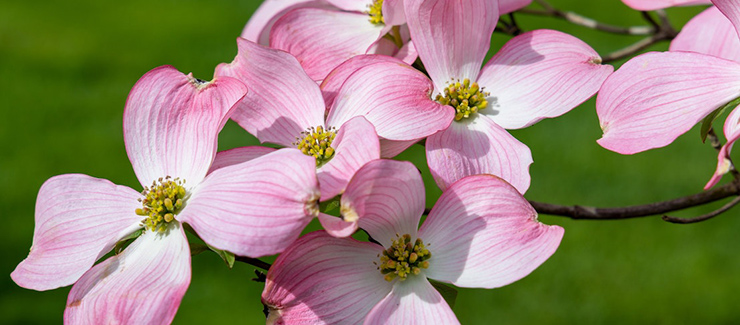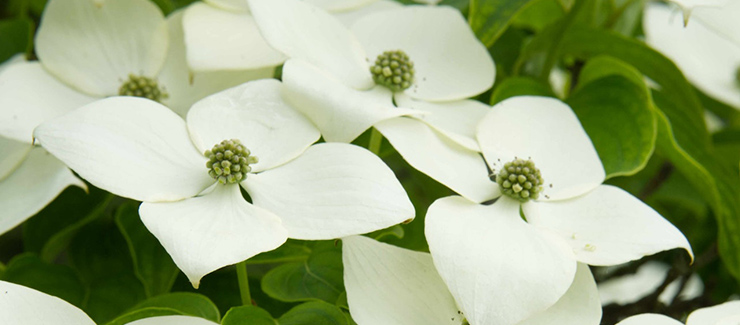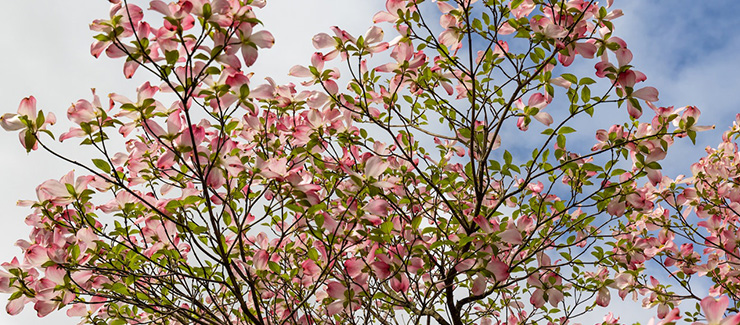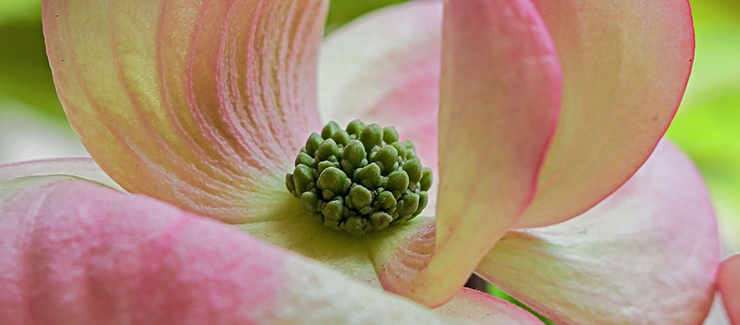
Need help determining if flowering dogwoods are the right trees for your Dunwoody, Georgia yard? Understanding flowering dogwood’s care requirements and growth habits will help determine if this beautiful tree species fits your property’s landscape.
fasttreeremovalatlanta.com gathered the following information about the flowering dogwood tree species, its growing requirements, and how it can fit into your yard’s landscaping plan.
Flowering Dogwood Tree Species
Flowering dogwood (Cornus florida) is a deciduous tree species native to the eastern United States. It is a popular ornamental tree, valued for its attractive shape, showy flowers, and bright red berries.
Flowering dogwood trees are a popular choice for landscaping in the eastern and southern United States, particularly in the Appalachian region, where they thrive and are native. They are often planted as ornamental trees in landscapes, parks, gardens, and along roadsides. They are also extremely beneficial to regional wildlife, providing food and habitat for birds and other small animals.

Flowering dogwood trees are recognized by most people for their spring floral display blooming in white or pink shades. The showy part is a leaf-like bract located under the tiny flowers. Consider the following Cornus florida growing traits:
Height - Typically reaches 20-30 feet, although it can grow up to 40 feet under ideal conditions.
Leaves - Oval-shaped leaves that are 3-6 inches long, turning reddish-purple in the fall
Flowers - Showy, four-petaled flowers that appear in the spring, ranging from white to pink to red.
Fruit - Small, bright red berries that ripen in the fall and persist into the winter.
Bark - Smooth, gray bark that develops a distinctive blocky pattern as the tree ages.
Once you’ve selected Cornus florida as your garden, landscape, border, ornamental, or specimen tree, consider the following preferred growing regions and conditions:
Hardiness Zones - Flowering dogwood thrives in USDA hardiness zones 5 through 9, although the tree is more commonly found growing in zones 6 through 8.
Soil - This species prefers well-drained, acidic soils (5.6 to 6.5 pH) rich in organic matter.
Light - Cornus florida grows best in partial shade and tolerates full sun in cooler climates.
Moisture - This tree species requires consistent moisture but will not tolerate waterlogged soil.
Considering this tree’s size, growth habits, and versatility, here are some of the best landscape uses for flowering dogwood trees:
Specimen Tree - Flowering dogwoods are ideal as a focal point in a garden or landscape design. They have a natural, picturesque shape and stunning flowers, which make them eye-catching specimen trees.
Understory Tree - Flowering dogwoods are naturally understory trees (they grow beneath the canopy of larger trees). These trees are exceptional for planting under taller trees, receiving dappled sunlight, and providing an understory layer of vegetation.
Group Planting - Planting multiple dogwoods together can create a stunning visual display. Plant in groups of three to five to create a natural-looking cluster.
Foundation Planting - Flowering dogwoods can be used as a foundation planting, planted alongside the foundation of a house or building (without concern of invading roots). Their natural, spreading shape and beautiful flowers display a soft, welcoming appearance to a home's exterior.
Street Planting - Flowering dogwoods are an excellent choice for planting along streets or in public areas. Their small, unobtrusive size and attractive flowers make them popular for urban landscapes.

Flowering Dogwood History
Flowering dogwood trees have a long and rich history in North America, dating back centuries. Here are some of the more notable moments in history that involve flowering dogwood trees:
Native American Folklore - Cherokee legend says the flowering dogwood tree was once a tall, massive, and straight tree. After the tree was used to craft the cross for the crucifixion of Jesus Christ, it was cursed to grow small and twisted forever, with white flowers shaped like a cross.
George Washington and Flowering Dogwoods - The country’s first President, George Washington, was known to have admired flowering dogwoods, planting them at his Mount Vernon estate. A famous painting of Washington's home by Edward Savage prominently features a flowering dogwood tree in the foreground.
Medicinal Uses - Native Americans and early European settlers used parts of the flowering dogwood tree for medicinal purposes. The bark was used to treat fever, malaria, and other ailments, while the tree’s roots were used as a joint pain remedy.
State Tree - Virginia and Missouri’s state tree is the flowering dogwood tree. In Virginia, it was selected for its historic significance and beauty. In Missouri, it was chosen for its prolific presence in the state's forest understory.
Ornamental Use - Flowering dogwoods have been popular ornamental trees for centuries, valued for their beautiful flowers and attractive form. The trees have been planted in gardens, parks, and public spaces throughout the United States and are often used to represent spring and renewal.

Cornus Florida
In this article, you discovered essential planting, care, and growth information about the flowering dogwood tree species (one of the most popular yard and landscape tree species in the eastern and southern United States.
Knowing how flowering dogwood trees grow and what locations they thrive in will help you get them planted in the best location and provide the best care for their health maintenance.
Failure to properly care for your flowering dogwood trees will leave them wilted, leafless, and standing out on your landscape for the wrong reason.
Sources:
plants.ces.ncsu.edu/plants/cornus-florida/
uky.edu/hort/Flowering-Dogwood
hgic.clemson.edu/factsheet/dogwood/
(404) 220-9963
To view the orignal version of this post, visit: https://www.fasttreeremovalatlanta.com/flowering-dogwood-trees-everything-you-need-to-know

No comments:
Post a Comment